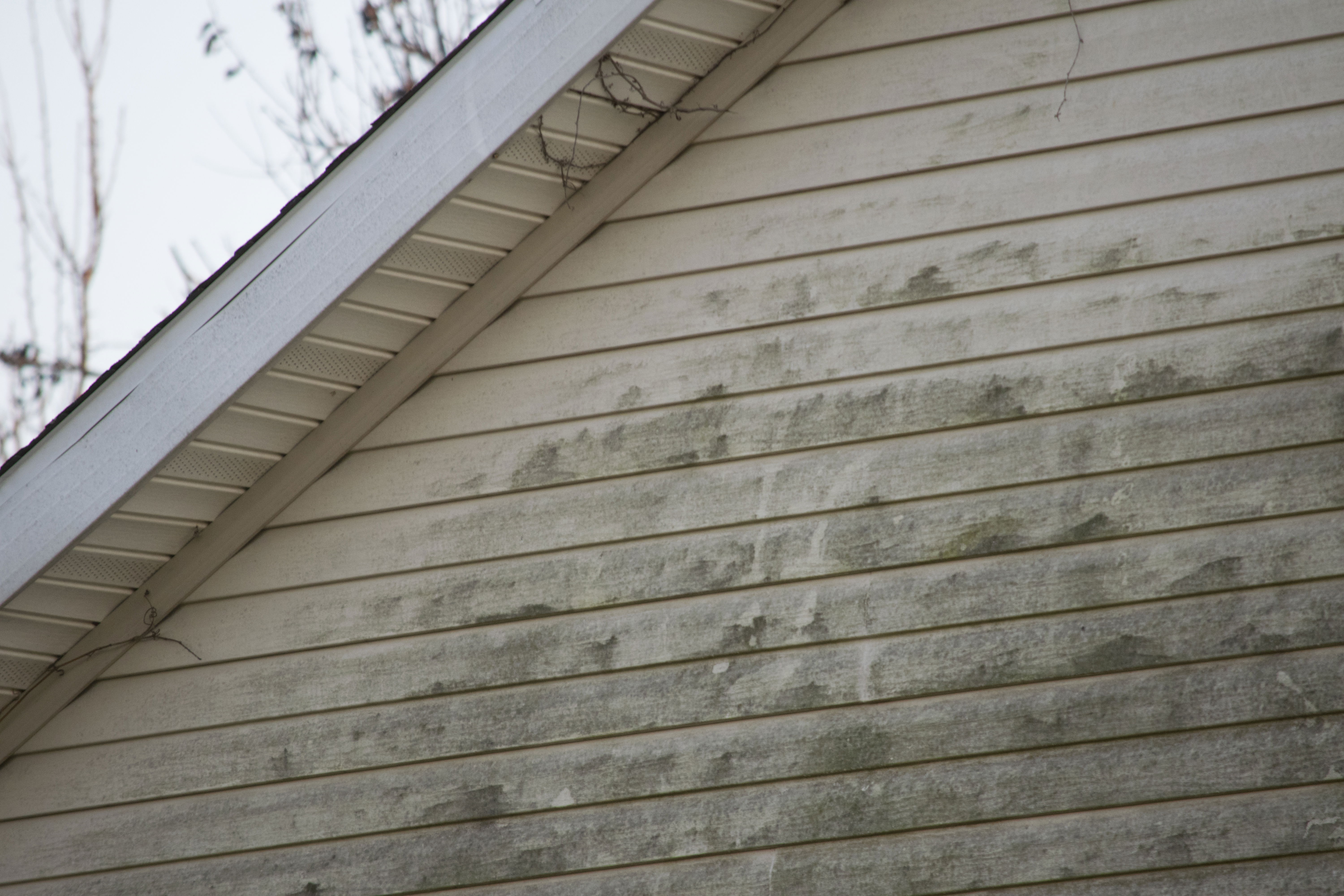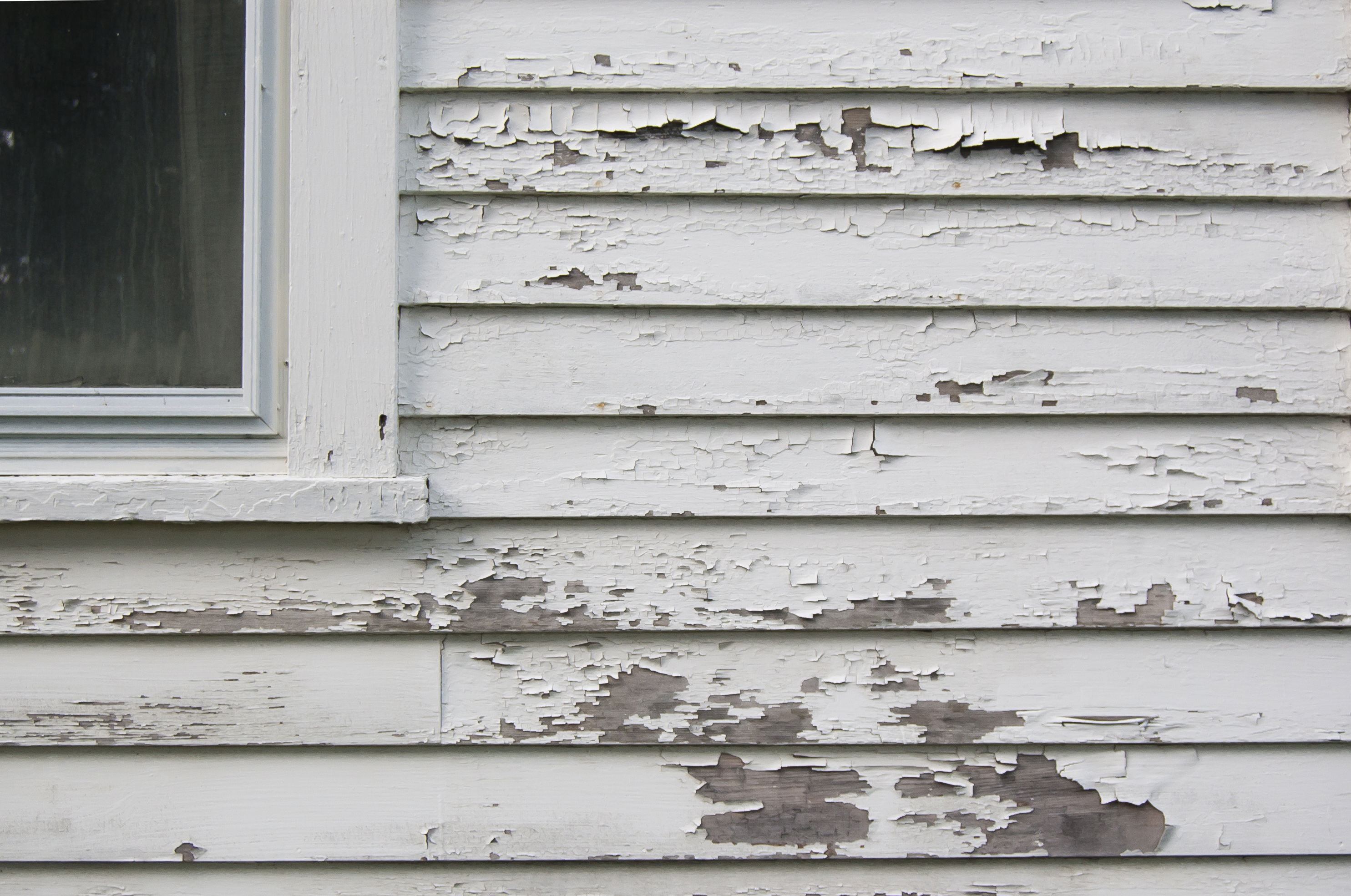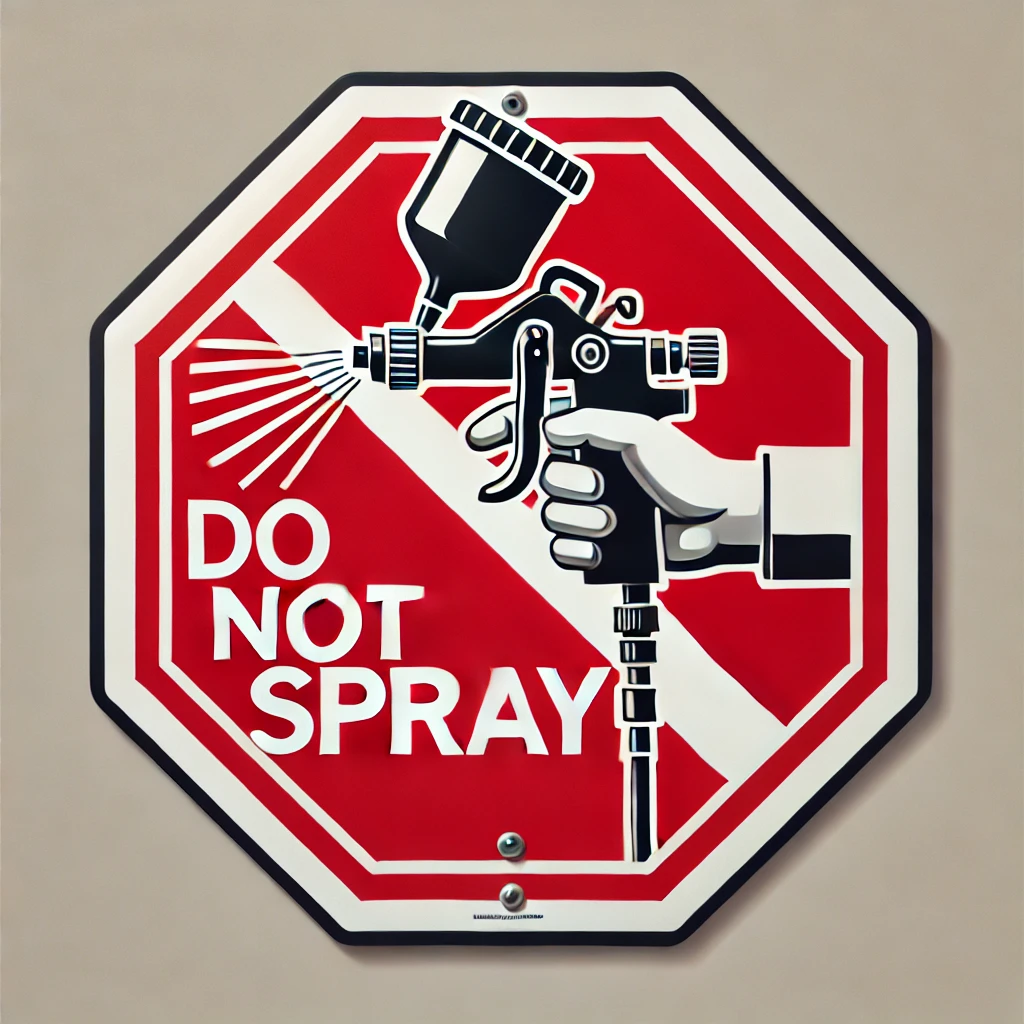Is It Safe? 5 Crucial Steps for Painting Asbestos Siding Safely

Key Highlights
- Safety Precautions: Emphasizes the critical steps needed to handle asbestos safely, including the use of protective gear and avoiding high-pressure washing which can disturb asbestos fibers.
- Detailed Preparation and Inspection: Outlines the importance of thorough inspection and preparation of the siding to ensure it's safe to paint over, including checking for any damage or signs of deterioration.
- Use of Appropriate Materials: Highlights the necessity of using specific paints and primers designed to adhere to asbestos surfaces without causing damage, thereby encapsulating the harmful fibers.
5 Crucial Steps for Painting Asbestos Siding Safely
Introduction
When Jane first bought her charming 1960s bungalow, she was excited about the potential to transform it into her dream home. However, her excitement turned to concern when she discovered the house had asbestos siding. Worried about the health risks and unsure about the best way to proceed, Jane contacted Lightmen Painting. Our team not only eased her fears but also helped her safely paint her home, giving it a beautiful new look while ensuring her family’s safety.
Importance of Safety in Asbestos Painting
Asbestos siding, common in homes built before the 1980s, presents significant health hazards if disturbed. Safety is paramount when dealing with asbestos, as improper handling can release dangerous fibers into the air. These fibers can cause serious illnesses, including asbestosis, lung cancer, and mesothelioma. Therefore, taking the correct precautions is essential.
Understanding Asbestos Siding
What is Asbestos Siding?
Asbestos siding is a type of exterior cladding made from asbestos fibers mixed with Portland cement. It was widely used in home construction before the 1980s due to its durability, fire resistance, and insulating properties. However, as the health risks of asbestos became clear, its use was discontinued.Asbestos fibers, when airborne and inhaled, pose severe health risks. These tiny, durable fibers can lodge in the lungs and other tissues, leading to serious respiratory diseases and cancers. This makes it crucial to handle asbestos materials carefully to avoid disturbing the fibers.
Why Paint Asbestos Siding?
Painting asbestos siding offers several benefits beyond simply improving your home's appearance. A fresh coat of paint can seal the asbestos fibers, reducing the risk of exposure. It also adds a layer of protection against the elements, helping to preserve the siding's integrity and extending its lifespan.Consider the case of John, a homeowner who transformed his dated asbestos-sided house into a vibrant, welcoming home with a fresh coat of paint. Not only did the new paint enhance his home's curb appeal, but it also provided peace of mind by encapsulating the hazardous asbestos fibers.
5 Crucial Steps for Painting Asbestos Siding Safely
Step 1: Preparation and Inspection
Inspecting the Siding
Before diving into any painting project, especially one involving asbestos siding, a thorough inspection is paramount. Inspecting the siding not only helps identify areas that need special attention but also ensures that safety protocols are strictly followed to prevent the release of asbestos fibers.
Detailed Steps on How to Inspect Asbestos Siding for Damage
- Visual Inspection: Begin with a visual inspection of the siding. Look for any signs of damage such as cracks, holes, or peeling. Pay close attention to areas near seams and edges where damage is more likely to occur.
- Touch Test: Gently touch the siding to check for any areas that might be loose or crumbling. Be extremely cautious to avoid disturbing the material. If any pieces come loose easily, it's a sign that the siding is deteriorating.
- Document Findings: Take detailed notes and photographs of any damaged areas. This documentation will help you plan the necessary repairs and communicate effectively with professionals if needed.
- Check for Water Damage: Look for signs of water damage or mold, which can weaken the siding and potentially release asbestos fibers. Water stains, warping, and discoloration are common indicators.
Importance of Not Disturbing the Asbestos Material
Asbestos fibers are extremely hazardous when inhaled. According to the Environmental Protection Agency (EPA), inhaling asbestos fibers can lead to severe health issues such as lung cancer, mesothelioma, and asbestosis. Therefore, it's crucial to avoid disturbing the asbestos material during the inspection. Even minor disturbances can release fibers into the air, posing a significant health risk.
Gathering Necessary Equipment
Having the right tools and safety gear is critical when dealing with asbestos siding. Using high-quality, disposable safety gear ensures that there is no risk of contamination and that the work is conducted safely.
List of Essential Tools and Safety Gear
- Protective Masks: Use N95 respirators or higher-grade masks to protect against inhaling asbestos fibers.
- Disposable Coveralls: Wear disposable coveralls to prevent asbestos fibers from contaminating your clothing.
- Gloves: Use heavy-duty, disposable gloves to protect your hands from exposure.
- Safety Goggles: Protect your eyes from any dust or debris.
- Water Spray Bottle: Lightly mist the siding to prevent fibers from becoming airborne.
- Soft-Bristle Brush: For gentle cleaning without disturbing the asbestos.
- Sealant: Use a high-quality sealant to repair any minor damages before painting.
- Primer: A good bonding primer to ensure the paint adheres properly to the siding.
Importance of Using High-Quality, Disposable Safety Gear
Using high-quality, disposable safety gear is essential to avoid contamination and ensure safety. Disposable gear prevents asbestos fibers from being carried away from the worksite, reducing the risk of exposure to others. Always dispose of used safety equipment in accordance with local hazardous waste regulations to ensure proper handling and disposal of asbestos-contaminated materials.

Step 2: Cleaning the Siding
Properly cleaning asbestos siding is a crucial step in preparing for a safe and effective paint job. This process, when done correctly, ensures that the surface is free from dirt and debris without disturbing the hazardous asbestos fibers. Here's a comprehensive guide on how to clean asbestos siding safely and effectively.
Safe Cleaning Practices
Detailed Guide on How to Clean Asbestos Siding Without Causing Damage or Releasing Fibers
Cleaning asbestos siding requires a delicate approach to avoid disturbing the material. Here’s a step-by-step guide:
- Wear Protective Gear: Before starting, ensure you are wearing the appropriate protective gear, including an N95 respirator, disposable coveralls, gloves, and safety goggles. This gear will protect you from any potential exposure to asbestos fibers.
- Dampen the Area: Lightly mist the siding with water using a spray bottle. Keeping the surface damp helps prevent asbestos fibers from becoming airborne.
- Prepare a Mild Cleaning Solution: Mix a gentle, non-abrasive detergent with water. Avoid using harsh chemicals or abrasive cleaners, as they can damage the siding and increase the risk of fiber release.
- Clean Gently: Use a soft-bristle brush to gently scrub the siding. Start from the top and work your way down to ensure any dirty water flows downward and doesn’t re-contaminate cleaned areas. Rinse the brush frequently to avoid spreading dirt and contaminants.
- Rinse with Low Pressure: After scrubbing, rinse the siding with a garden hose set to a low pressure. High-pressure water can disturb the asbestos material, so it’s crucial to keep the pressure gentle.
Avoiding High-Pressure Washing
Explanation of Why High-Pressure Washing is Dangerous for Asbestos Siding
High-pressure washing is a common method for cleaning many surfaces, but it is highly dangerous for asbestos siding. The force of the water can easily disturb the asbestos fibers, causing them to become airborne. This poses a significant health risk not only to the person performing the cleaning but also to anyone in the vicinity.
Alternative Methods that are Safer and Equally Effective
Instead of high-pressure washing, consider these safer alternatives:
- Low-Pressure Rinse: As mentioned, a low-pressure garden hose is effective for rinsing away dirt and cleaning solutions without disturbing the siding.
- Hand Washing: For smaller areas or particularly dirty spots, hand washing with a damp sponge and mild detergent can be effective. Ensure the sponge is only slightly damp to avoid excess water runoff.
- Steam Cleaning: If available, steam cleaning can be a gentle and effective method for cleaning asbestos siding. The steam helps to lift dirt without the high pressure that can disturb the fibers.

Step 3: Repairing Damages
Repairing asbestos siding is a delicate process that requires careful handling to avoid disturbing the hazardous fibers. Proper repairs not only extend the life of the siding but also ensure a safe and stable surface for painting. In this section, we will explore how to identify and seal cracks, when to call in professionals for major damages, and provide practical examples to illustrate these points.
Identifying and Sealing Cracks
Step-by-Step Process for Sealing Cracks and Small Holes in Asbestos Siding
- Wear Protective Gear: As always, start by wearing appropriate protective gear including an N95 respirator, disposable coveralls, gloves, and safety goggles. Safety should be your top priority when working with asbestos siding.
- Inspect the Siding: Carefully inspect the entire surface of the siding for any cracks, small holes, or areas where the material is deteriorating. Use a flashlight to help identify any hard-to-see damage.
- Clean the Damaged Area: Gently clean around the cracks and holes with a damp cloth to remove any dirt or debris. This helps ensure that the sealant will adhere properly. Be sure to keep the area moist to prevent asbestos fibers from becoming airborne.
- Select an Appropriate Sealant: Choose a high-quality, asbestos-compatible sealant. Products such as acrylic latex caulk or polyurethane caulk are typically recommended because they provide a flexible, durable seal without disturbing the asbestos material.
- Apply the Sealant: Using a caulking gun, carefully apply the sealant to the cracks and small holes. Fill the damaged areas completely, ensuring that the sealant penetrates all gaps. Smooth the surface with a putty knife for a clean finish.
- Allow to Cure: Let the sealant cure according to the manufacturer’s instructions. This usually takes 24-48 hours. Do not disturb the area while it is curing to avoid compromising the seal.
Importance of Using Appropriate Sealants
Using the correct sealants is crucial when repairing asbestos siding. The right product will adhere well to the surface without disturbing the asbestos fibers. This minimizes the risk of fiber release and ensures a durable, long-lasting repair. According to the Asbestos Disease Awareness Organization, improper handling of asbestos materials can significantly increase the risk of airborne contamination, which underscores the importance of using appropriate products and techniques.
Professional Repairs for Major Damages
When to Call a Professional for Asbestos Siding Repair
While minor cracks and small holes can be repaired by a homeowner with the right precautions, major damages should be handled by professionals. Significant issues such as large cracks, extensive areas of deterioration, or damage that compromises the structural integrity of the siding require specialized skills and equipment.Signs that you need professional help include:
- Large or widespread cracks
- Bulging or warping of the siding
- Water damage leading to significant weakening of the material
- Any indication that the asbestos material is friable (easily crumbled)

Step 4: Priming the Siding
Priming asbestos siding is a crucial step in ensuring a durable and attractive paint job. The right primer creates a stable, smooth surface for the paint, while also sealing the asbestos fibers and preventing them from becoming airborne. In this guide, we’ll cover how to choose the right primer and the proper techniques for application to achieve the best results.
Choosing the Right Primer
Recommendations for Primers that are Safe and Effective for Asbestos Siding
Selecting the right primer is essential for safely and effectively preparing asbestos siding for painting. Here are some recommendations:
- Acrylic Latex Primer: This type of primer is water-based and known for its excellent adhesion and flexibility. It's ideal for asbestos siding because it can seal the surface without the need for sanding, which could disturb asbestos fibers.
- Encapsulating Primer: Specifically designed to encapsulate asbestos fibers, these primers create a thick, durable barrier that locks in the fibers. Brands like Fiberlock and Childers offer high-quality encapsulating primers that are perfect for this purpose.
- Oil-Based Primer: For areas that require extra durability and protection, oil-based primers can be effective. However, they often have higher VOC levels, so ensure proper ventilation during application.
Benefits of Using High-Quality, Encapsulating Primers
Using high-quality, encapsulating primers provides several benefits:
- Safety: Encapsulating primers seal asbestos fibers, reducing the risk of exposure and contamination.
- Durability: These primers enhance the longevity of the paint job by providing a strong, stable base.
- Adhesion: They improve the adhesion of the topcoat, ensuring a smooth and even finish.
- Weather Resistance: High-quality primers protect the siding from moisture and UV damage, which is crucial for maintaining the integrity of the asbestos material.
According to the Environmental Protection Agency (EPA), encapsulation is a recommended method for managing asbestos in place, as it effectively seals fibers and prevents them from becoming airborne.
Proper Application Techniques
Tips for Applying Primer Evenly Without Disturbing the Asbestos Siding
Applying primer correctly is crucial to avoid disturbing asbestos fibers and achieving a professional finish. Here are some tips:
- Prepare the Surface: Ensure the siding is clean and dry before application. Remove any loose debris gently with a soft brush.
- Use Appropriate Tools: Use a high-quality brush or roller that is designed for use with the type of primer you’ve selected. For larger areas, an airless sprayer can provide an even coat without excessive pressure.
- Apply Evenly: Start from the top and work your way down, applying the primer in thin, even coats. Avoid excessive back-and-forth motions that could disturb the siding.
- Maintain a Safe Distance: If using a sprayer, keep a consistent distance from the surface to ensure even coverage without applying too much pressure.
- Follow the Grain: Apply the primer in the direction of the siding's grain or pattern to ensure a smooth, uniform finish.
Importance of Following Manufacturer Instructions for Optimal Results
Each primer product will have specific instructions from the manufacturer. Following these guidelines is essential for several reasons:
- Coverage: Ensures you apply the correct amount of primer for effective coverage and sealing.
- Drying Time: Adheres to recommended drying times to prevent issues with adhesion and finish quality.
- Safety: Provides important safety information, such as ventilation requirements and handling precautions.
For instance, if using an encapsulating primer like Fiberlock, the manufacturer’s instructions will include specific application methods to maximize the product's effectiveness in sealing asbestos fibers.
In Our Experience:
"Tackling asbestos siding projects with the utmost safety and precision has taught us the importance of meticulous preparation and the right choice of materials. We've transformed numerous homes, ensuring each project not only meets aesthetic goals but also adheres to the highest safety standards. From choosing low-VOC, asbestos-safe paints to conducting rigorous pre-painting inspections, our approach has consistently resulted in safe, beautiful homes without compromising on health and safety. This commitment to excellence and safety has made us a trusted name in asbestos siding painting."
Step 5: Painting the Siding
Painting asbestos siding is the final step in revitalizing your home while ensuring it remains safe and attractive. This process requires careful selection of the right paint and meticulous application techniques to avoid disturbing asbestos fibers. In this article, we’ll guide you through selecting the best paint for durability and protection and share safe painting techniques, supported by expert insights and personal experiences.
Selecting Safe and Durable Paint
Recommendations for Paints that Provide Durability and Protection for Asbestos Siding
Choosing the right paint for asbestos siding is crucial to ensure long-lasting protection and aesthetic appeal. Here are some top recommendations:
- Acrylic Latex Paint: Known for its durability and flexibility, acrylic latex paint is an excellent choice for asbestos siding. It provides a strong, weather-resistant finish that can withstand various environmental conditions.
- Elastomeric Paint: This paint type is highly durable and flexible, making it ideal for surfaces that expand and contract with temperature changes. It forms a thick, rubber-like coating that provides excellent protection against moisture and UV rays.
- High-Quality Exterior Paint: Brands like Sherwin-Williams Duration Exterior Latex or Benjamin Moore Aura Exterior offer superior adhesion, durability, and resistance to mildew and fading.
Importance of Choosing Paints with Low VOCs for Better Air Quality
Volatile Organic Compounds (VOCs) are chemicals found in many paints that can evaporate into the air, causing health issues such as headaches, dizziness, and respiratory problems. Using paints with low or zero VOCs improves indoor air quality and reduces the environmental impact. According to the Environmental Protection Agency (EPA), exposure to VOCs can have both short- and long-term adverse health effects, so choosing low-VOC paints is a healthier option for you and your family.
Applying the Paint Safely
Techniques for Painting Asbestos Siding, Including Brush and Roller Methods
Proper application techniques are essential to ensure a smooth finish and avoid disturbing the asbestos siding. Here are some safe and effective methods:
- Brush Method:
- Tools: Use high-quality synthetic brushes that provide good coverage and minimize the risk of disturbing the siding.
- Technique: Apply the paint in long, even strokes, following the grain of the siding. Start from the top and work your way down to avoid drips and ensure even coverage.
- Roller Method:
- Tools: Use a high-nap roller designed for textured surfaces. A 1/2-inch to 3/4-inch nap is typically suitable for asbestos siding.
- Technique: Roll the paint onto the siding using a "W" pattern, then fill in the gaps with vertical strokes. This ensures even distribution and good coverage.
Avoiding Spray Painting to Minimize the Risk of Fiber Release
Spray painting asbestos siding is not recommended because the high pressure can disturb the asbestos fibers, causing them to become airborne. Instead, stick to brush and roller methods to ensure safety. According to the Asbestos Safety and Eradication Agency, disturbing asbestos materials increases the risk of fiber release, which can be hazardous to health.

Lightmen Painting’s Expertise in Handling Asbestos Siding
When it comes to painting asbestos siding, safety, and expertise are paramount. At Lightmen Painting, we pride ourselves on our meticulous approach to handling asbestos siding, ensuring that every project is completed safely and to the highest standards of quality. Here’s how our approach and dedication make us the top choice for your asbestos siding needs.
Our Approach to Safety
Highlight Our Meticulous Safety Protocols and Training in Handling Asbestos Siding
Safety is the cornerstone of our asbestos siding projects. Our team undergoes rigorous training and adheres to stringent safety protocols to manage and mitigate any risks associated with asbestos fibers. Here’s a closer look at our safety approach:
- Comprehensive Training: All our team members are trained in asbestos handling and abatement procedures. This includes understanding the properties of asbestos, recognizing potential hazards, and implementing best practices to avoid fiber release.
- Protective Gear: We use high-quality protective gear, including N95 respirators, disposable coveralls, gloves, and safety goggles. This gear ensures that our workers are protected from asbestos exposure at all times.
- Controlled Environment: We establish controlled environments using barriers and dampening techniques to minimize the risk of asbestos fibers becoming airborne. This involves lightly misting surfaces to keep dust down and using containment barriers to isolate the work area.
- Safe Disposal: Any waste materials, including old paint and debris, are disposed of following local and federal regulations. This ensures that asbestos-contaminated materials do not pose a risk to the environment or public health.
Personal Stories from Satisfied Clients Who Appreciated Our Careful Approach
Our clients’ peace of mind and satisfaction are our top priorities. Here’s a story from one of our satisfied clients, Jane, who needed her asbestos-sided home painted:"After purchasing a charming older home, I was worried about the asbestos siding. Lightmen Painting put my mind at ease with their thorough safety protocols. Their team handled everything with such care and professionalism. The house looks amazing, and I feel confident that it was done safely. I couldn’t have asked for a better experience."
Why Choose Lightmen Painting?
Emphasize Our Commitment to Quality, Safety, and Customer Satisfaction
At Lightmen Painting, we are committed to delivering the highest quality service while ensuring the safety of our clients and our team. Here’s what sets us apart:
- Unmatched Expertise: With years of experience in painting asbestos siding, we bring a wealth of knowledge and skill to every project. Our team understands the unique challenges and requirements of working with asbestos materials.
- Quality Materials: We use only the best paints and primers that are safe for asbestos siding. Our choices ensure durability, excellent coverage, and a beautiful finish that stands the test of time.
- Customer-Centric Approach: We believe in clear communication and transparency. From the initial consultation to the final walk-through, we keep our clients informed and involved every step of the way.
Our Experience and Success Stories in Painting Homes with Asbestos Siding
Our track record speaks for itself. We have successfully completed numerous projects involving asbestos siding, earning the trust and praise of our clients. Here’s an example:In a recent project, we worked on a historic home with extensive asbestos siding. The homeowner was concerned about preserving the property’s charm while ensuring safety. Our team meticulously prepped, primed, and painted the siding, resulting in a stunning transformation. The homeowner was thrilled with the outcome and relieved that the process was handled with utmost care.
Recap
Painting asbestos siding involves several crucial steps: careful inspection and repair, thorough cleaning, proper priming, and safe painting techniques. Each step must be performed with precision to ensure safety and achieve a high-quality finish.
Actionable Tips and Takeaways
- Always wear appropriate protective gear when handling asbestos.
- Use a high-quality primer and paint for the best results and longevity.
- Regularly inspect and maintain your asbestos siding to ensure it remains in good condition.
- Consider hiring professionals for safe and effective painting of asbestos siding.
Action
If you’re considering painting your asbestos-sided home, trust the experts at Lightmen Painting. Our commitment to safety, quality, and customer satisfaction makes us the ideal choice for your project. Contact us today to schedule a consultation and learn how we can help transform your home safely and beautifully.
Personal Note
Handling asbestos siding can be daunting, but with the right approach, it can be done safely and effectively. At Lightmen Painting, we have the expertise and dedication to ensure your project is completed to the highest standards. Your safety and satisfaction are our top priorities, and we are here to support you every step of the way.
-
People Also Ask:
Can I inspect asbestos siding myself?
Yes, you can inspect asbestos siding yourself, but it requires extreme caution. Always wear proper protective gear, such as a high-quality mask, gloves, and potentially a protective suit, to minimize the risk of exposure to asbestos fibers. Be very careful not to disturb the material, as any damage can release hazardous fibers into the air. If you are unsure about how to safely inspect the siding or if you notice any damage, it is best to hire a professional. Professionals have the expertise and equipment to safely inspect and assess asbestos siding, ensuring that any potential risks are managed appropriately.
What should I do if I find significant damage?
If you find significant damage to asbestos siding, it is crucial to contact a professional asbestos abatement company immediately. These professionals are trained and equipped to safely handle and repair damaged asbestos materials. Attempting to repair or remove asbestos siding yourself can be extremely dangerous, as disturbing the material can release hazardous asbestos fibers into the air, posing serious health risks. A professional abatement company will follow strict safety protocols to contain and manage the asbestos, ensuring that the damaged areas are properly addressed without endangering your health or the environment.
Is it safe to clean asbestos siding?
Cleaning asbestos siding can be done safely if approached with caution and proper techniques. It is essential to use a soft-bristle brush to gently scrub the surface and to lightly mist the area with water to prevent the release of asbestos fibers into the air. Avoid using high-pressure methods, such as power washing, as these can disturb the asbestos material. Additionally, always wear protective gear, including a mask, gloves, and possibly a protective suit, to reduce the risk of exposure to asbestos fibers. By following these safety measures, you can clean asbestos siding without posing a significant health risk to yourself or others.
Can I power wash asbestos siding before painting?
No, power washing asbestos siding is not recommended because it can disturb and release hazardous asbestos fibers into the air. Instead, use a gentle detergent solution and a low-pressure hose to clean the siding before painting. This method effectively removes dirt and grime without causing damage to the asbestos material. By using a low-pressure approach, you minimize the risk of asbestos fibers becoming airborne, which is crucial for maintaining a safe environment. Always prioritize safety and follow proper procedures when preparing asbestos siding for painting to ensure that the health risks associated with asbestos are effectively managed.
Is it safe to paint asbestos siding myself?
While it is technically possible to paint asbestos siding yourself, it is highly recommended to hire professionals, such as Lightmen Painting, to ensure the job is done safely and correctly. Asbestos fibers can be hazardous if they become airborne, which can happen if the siding is disturbed during the preparation or painting process. Professionals are trained in handling asbestos-containing materials and follow strict safety protocols to minimize the risk of exposure. They use specialized equipment and techniques to ensure that the asbestos siding is properly sealed and painted without releasing harmful fibers. By hiring experts, you can ensure that all safety measures are strictly adhered to, protecting both yourself and your environment from potential health hazards.
How often should asbestos siding be painted?
Generally, asbestos siding should be painted every 10-15 years. This timeframe can vary based on several factors, including the condition of the existing paint, the climate in your area, and the level of exposure to elements such as sunlight, rain, and humidity. Regular inspections of the siding can help determine if it needs repainting sooner. Look for signs of paint deterioration, such as peeling, cracking, or fading, which indicate that a fresh coat of paint is necessary to maintain the siding's protective and aesthetic qualities. Proper maintenance, including timely repainting, helps prolong the life of the asbestos siding and keeps it looking its best.
What type of paint is best for asbestos siding?
When selecting paint for asbestos siding, it's important to use a high-quality, exterior-grade paint specifically formulated for this type of material. These paints are designed to adhere well to the unique surface of asbestos siding and provide durable, long-lasting protection against weather and other environmental factors. For the best results, consult with a paint professional who can recommend specific products that are suitable for asbestos siding. They can offer guidance on the best primer and paint combinations, as well as any additional preparation steps needed to ensure a safe and effective painting process.
-
SUBSCRIBE TO OUR BLOG: Stay informed with the latest in Painting and DIY projects by subscribing to Lightmen Painting. Get insights, tips, and more delivered straight to your inbox. We would also love to know what you would like to read about, leave thoughts on where we should go next. Interests, Topics, Ideas, all are welcome.
If your in the Portland, Or. area and need advice or a free no obligation estimate call us at 503-389-5758 or email scheduling@lightmenpainting.com
Shout Out:
Celebrating Kijiji: Your Marketplace for Affordable Painting Services
From the team at Lightmen Painting, we extend our highest praise to Kijiji for being a trusted platform where homeowners in Ontario can find affordable and professional painting services. Just as we strive for excellence in our painting solutions, Kijiji helps connect clients with skilled painters who deliver quality results at competitive prices. Their commitment to facilitating great value and service aligns perfectly with our mission to enhance and beautify every home.Please let me know if there's anything specific you'd like to learn about Kijiji or other topics you're interested in!
Thanks for stopping by Lightmen Daily! Stay tuned for more practical tips and expert advice on making your painting projects flawless, from wall to floor!
Definitions
- Asbestos Siding: A type of siding made from asbestos fibers mixed with cement, used for its durability and resistance to fire.
- Mesothelioma: A type of cancer linked to asbestos exposure, affecting the lining of the lungs and other organs.
- PPE (Personal Protective Equipment): Equipment worn to minimize exposure to hazards that cause serious workplace injuries and illnesses.
- Encapsulation: A method used to seal asbestos materials with a barrier to prevent fiber release.
- Acrylic Latex Paint: Water-based paint known for its flexibility and good adhesion, suitable for painting asbestos siding.
- EPA (Environmental Protection Agency): The US federal agency responsible for regulating the handling and disposal of asbestos.
- HEPA Filter: High-efficiency particulate air filter that traps harmful particles such as asbestos.
- Asbestosis: A chronic lung disease caused by inhaling asbestos fibers.
- VOC (Volatile Organic Compounds): Chemicals that evaporate at room temperature and can cause health issues, found in many types of paint.
- Primer: A preparatory coating put on materials before painting, ensuring better adhesion of paint to the surface and increasing paint durability.
Lightmen Painting Serving: Portland, Tigard, Lake Oswego, Tualatin, West Linn, Milwaukie, Sherwood, Happy Valley, Oregon City, Beaverton, Hillsboro, Gresham

